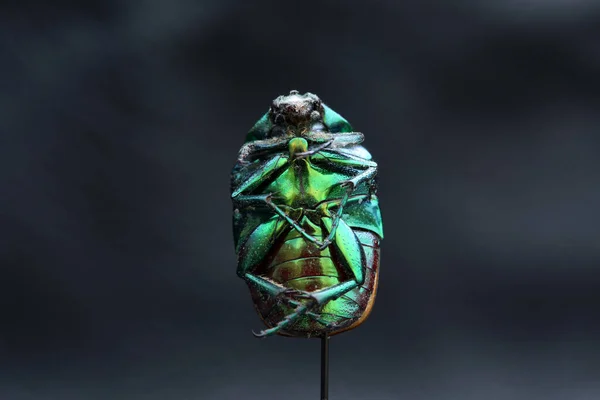
The world of insects has always fascinated scientists, engineers, and nature enthusiasts alike. These tiny creatures, often overlooked in our daily lives, make up over 80% of all known animal species on Earth. Yet until recently, much of their internal anatomy remained a mystery due to the limitations of conventional imaging techniques. Now, thanks to X-ray imaging of insects, researchers are peering inside these creatures with unprecedented clarity—unlocking secrets hidden beneath their exoskeletons and transforming our understanding of biology, evolution, and technology.
Using high-powered X-ray sources such as synchrotrons, scientists are gaining access to ultra-high-resolution 3D visualizations of insect anatomy. This non-invasive method is changing the game in entomology, biomimicry, and even environmental science, opening up entirely new possibilities for research and innovation.
🔬 What Is X-Ray Imaging of Insects?
X-ray imaging of insects is a powerful radiographic method that enables scientists to observe the interior structures of insects in fine detail without dissecting or damaging them. It works similarly to CT scans used in human medicine but with far higher resolution. Instead of traditional X-ray machines, researchers rely on synchrotron light sources, which produce ultra-bright, focused beams of X-rays capable of capturing microscopic internal features down to the cellular level.
The process involves placing the insect in the path of the X-ray beam and rotating it incrementally while capturing thousands of images. These images are then digitally reconstructed into a 3D model, revealing every nuance of the insect’s internal architecture—from muscle fibers and nerve pathways to air sacs and digestive systems.
This approach is particularly valuable because it preserves the specimen in its natural state. No dissection is needed, and even delicate soft tissues remain intact, making this method ideal for observing both live and preserved insects.
🧠 What Scientists Are Discovering Inside Insects
The insights from X-ray imaging of insects are reshaping our understanding of these tiny but incredibly complex organisms. Here are some of the most surprising revelations:
1. Flight Musculature and Wing Coordination
Scientists have been able to map the flight muscle systems of bees, dragonflies, and flies in 3D, revealing exactly how these insects coordinate rapid wing beats. This information is helping researchers develop better flying robots and drones based on insect flight dynamics.
2. Breathing Through Tracheal Systems
Unlike mammals, insects breathe through tiny tubes called tracheae. X-ray imaging has visualized how these networks expand and contract to deliver oxygen directly to their tissues. This helps scientists understand how insects adapt to different environments—insights that are vital in ecological and climate research.
3. Metamorphosis in Real Time
Capturing larvae or pupae at different stages of development, scientists are witnessing the transformation process of insects like butterflies and beetles in stunning detail. Observing how organs shift and grow offers clues into genetic expression and biological regulation.
4. Previously Unknown Species Traits
With this technology, taxonomists are identifying micro-anatomical differences between species that were previously indistinguishable by external traits alone. This helps in cataloging biodiversity more accurately and discovering new species.
🌱 Implications Across Science and Technology
The benefits of X-ray imaging of insects go far beyond academic interest. This technology is now driving innovation and insights in several applied fields:
✔ Biomimicry and Robotics
Engineers are studying insect structures to design efficient, lightweight robots and drones. For example, understanding the hinge mechanisms in beetle wings has inspired foldable drone designs that can operate in tight or rugged environments.
✔ Agricultural Science
Knowing the internal biology of pest insects helps scientists develop more targeted and sustainable pest control strategies. Researchers can assess how certain compounds affect specific organs or functions without harming beneficial species.
✔ Medical Microdevices
The design of micro-valves and miniature mechanical systems is being influenced by the respiratory and circulatory models found in insect anatomy. These biological solutions offer templates for nanotechnology and microsurgery tools.
✔ Education and Public Engagement
Museums and science centers are using 3D X-ray models of insects in interactive exhibits, allowing the public to explore insect anatomy in immersive and visually stunning ways.
🌍 A New Era of Insect Research
With X-ray imaging of insects, we are entering a golden age of biological discovery. Researchers are no longer limited to what can be seen on the surface. Instead, they can now explore the insect world from the inside out—unlocking millions of years of evolutionary design in the process.
As imaging technology becomes more accessible and AI-driven analysis tools evolve, the possibilities are expanding. Scientists envision a future where millions of insect species could be scanned, cataloged, and analyzed, helping us monitor ecosystem health and adapt to environmental change.
Furthermore, portable micro-imaging systems are in development, which could one day allow entomologists to scan insects in the field in real-time. This would be a huge leap for biodiversity studies, conservation work, and rapid species identification.
🧩 Final Thoughts
The advent of X-ray imaging of insects is more than just a technological breakthrough—it’s a paradigm shift. By giving us a clear view into the hidden worlds inside insects, this method is reshaping multiple disciplines at once. It’s helping us appreciate the complexity of life at a scale too small for the naked eye and encouraging us to think differently about the role these creatures play in our world.
For the tech and science communities, it represents a new frontier where biology meets engineering, where curiosity fuels innovation, and where the smallest lifeforms can inspire some of our greatest ideas.